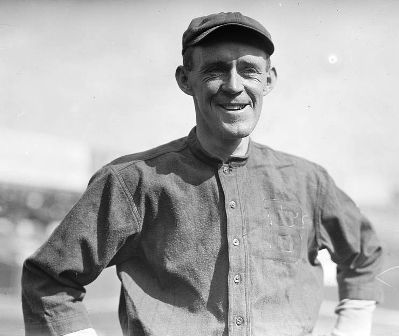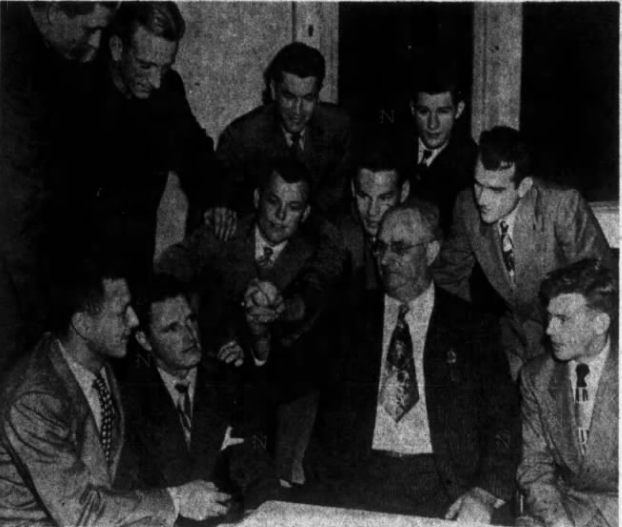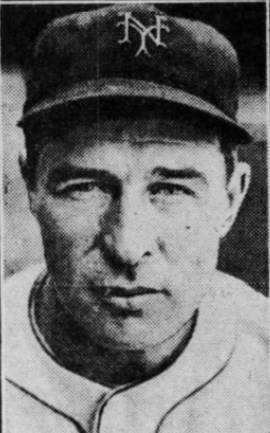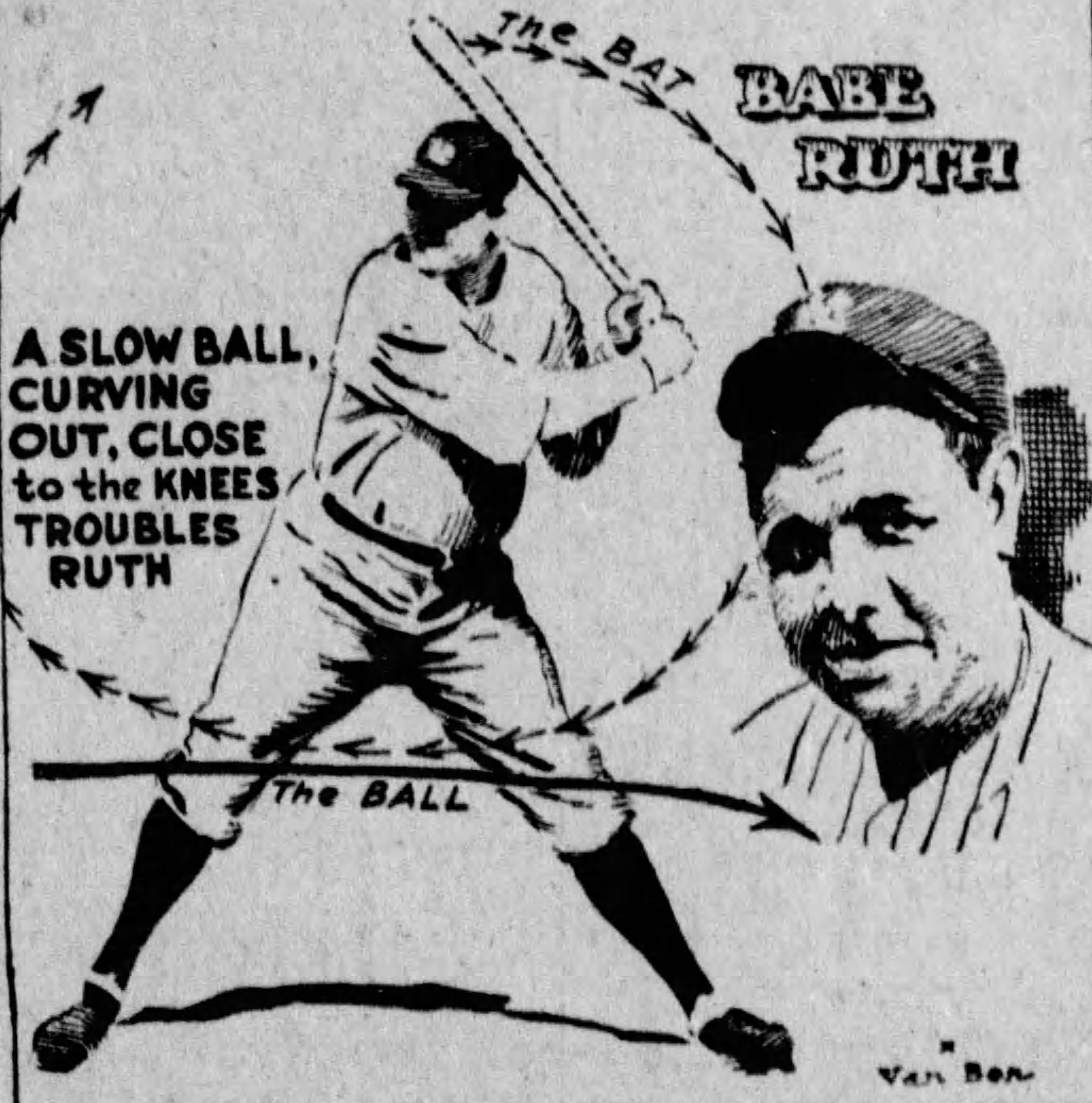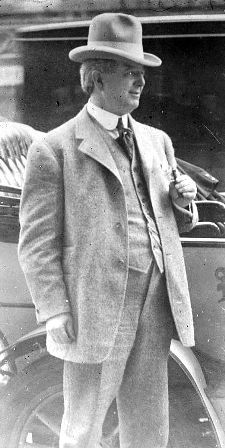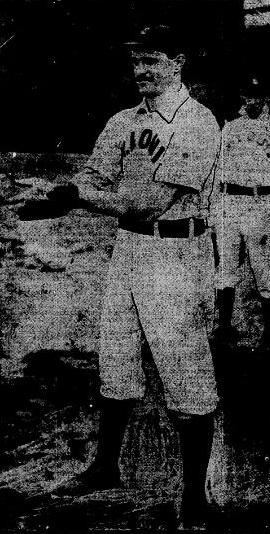Blaine “Kid” Durbin was a sure thing. So said Frank Chance on the eve of the 1907 season.
As a 19-year-old, Durbin posted a 32-8 record for the Joplin Miners in the Western Association the previous year. Chance told The Chicago Daily-News:
“Blaine Durbin is going to be a sensational pitcher before long. When he stacks up against a club like Boston, with four or five left-handed hitters, he is going to make a great showing. What I like best about him is his nerve. Nothing can freeze him.”

Durbin
Chance said he was not concerned that Durbin was just five foot eight, nor was Henry “Farmer” Vaughan, manager of the Southern Association Birmingham Barons.
Chance said after Durbin pitched in a game that spring in Alabama, Vaughan approached him to see if “there was any chance of his getting” the rookie pitcher, and Chance mentioned Durbin’s size. Vaughn replied:
“He’s as big as Clark Griffith (Griffith is listed at 5’ 6”), and Griffith used to strike me out quite often. If Griffith was big enough, so is Durbin.”
Chance said:
“I told Vaughan I had no idea of letting him go.
“’Let me ask just one favor of you then,’ answered Vaughan: ‘don’t leave him in this league. If I can’t have him, I don’t want to have to play against him.’”
Chance said “scarcely a day passes that I don’t get a query” about Durbin and Chance said half the National League wanted him:
“I guess Durbin has a permanent berth with the Cubs.”
Durbin pitched in just five games for the Cubs (0-1 5.40), and only remained with the team for the entire season because when the Cubs tried to send him to Omaha in June, according to The Chicago Tribune, “The Boston Nationals stepped in” and would have taken Durbin.
He remained with the team all season and appeared in six games as an outfielder and pinch hitter.
Durbin did not get into in a game during Chicago’s World Series victory over the Detroit Tigers, but his hometown paper, The Fort Scott (Kansas) Republican, said he took home $2300.10 in postseason money and used it to buy a farm.
Still a hero in the Missouri town where he won 32 games in 1906, The Joplin Globe called him “the best baseball pitcher that ever wore a Joplin uniform,” when Durbin visited friends there and “proudly displayed the world’s championship emblem…in the form of a watch charm and represents a bear’s head holding a baseball.” Durbin told the paper the Cubs had big plans for him in 1908:
“Manager Chance assured me that I would be one of the regular twirlers next season.”
The 1908 campaign got off to a bad start for Durbin even before the team’s opener in Cincinnati on April 14. Charles Dryden, the baseball writer at The Chicago Tribune, who had his own nickname for Durbin, said:
“Danny Dreamer Durbin lost out at the distribution of new uniforms, which took place at the fashionable hour of high noon. There were but twenty togas for twenty-one demon athletes. When the Peerless Leader sounded the boot and saddle call, Danny was in his apartment perusing the latest messenger boy thriller in the Tip Top Weekly and Donohue copped the new clothes.”
The “Donohue” referred to by Dryden was pitcher Joe Donohue, who had spent 1907 with the Spaldings in the Chicago City League; he was with the club at the beginning of the season but never appeared in a game for the Cubs or any other professional team.
Presumably, when Donohue was cut loose, Durbin was rewarded with a uniform—when he made his first appearance at West Side Grounds on April 22, after the team’s season opening road trip Dryden wrote in The Tribune:
“Danny Dreamer Durbin looked like a five-cent plate of ice cream in his new white suit.”
The “Danny Dreamer” nickname was placed on Durbin by Dryden in 1907, when the entire Cubs team attended a play featuring actress Lillian Russell “an ardent baseball fan,” after the World Series victory. According to The Sporting News:
“Durbin was a member of the party and occupied a prominent place in the front row of the box, all togged out in his dress suit and patent leathers.
“In appearance of Miss Russell’s hospitality, the Cubs chipped in and bought a beautiful bouquet of flowers for the popular actress. The bouquet was to have been presented her across the footlights.
“But Durbin stole a march on the Cubs. He copped the flowers and disappeared from the box. Shortly afterwards the bouquet was presented through he wings. Durbin did the presentation…(Dryden) wrote the story of Durbin’s little steal and told how he had done the ‘Danny Dreamer’ stunt.”
The closest Durbin came to pitching again for the Cubs was on June 2, with the club trailing the Pirates 7 to 1 in the bottom of the fifth, The Tribune said Chance had Durbin ready to enter the game, but:
“(W)hile little Danny Dreamer was warming up the Cubs got mad and pounded Vic Willis into a shoestring, scoring four runs.”
Mordecai Brown instead took the mound in the sixth and promptly allowed two runs. The Cubs lost 12 to 6.
Durbin remained with the team for the entire season, appearing in 14 games as an outfielder and pinch hitter, hitting .250 (7 for 28), and for a brief period in July it looked like he might get more playing time. The Daily News said:
“(Durbin’s) work in center field since the Cubs returned to their home park stamps this little southpaw as a man possessing the qualifications for developing into a grand outfielder.”
The paper also noted his “speed going down to first,” and claimed, “It is doubtful whether there is a faster man getting down to first in the big leagues than Blaine Durbin.”
Durbin all but disappeared from box scores after July but picked up another world championship check despite again not making an appearance in the series—however, it was not quite the windfall of 1907; The Tribune said Durbin was forced to split a $1500 share three ways (the shares were $1400 but the Cubs added $100 to make the three-way split) with pitcher Rube Kroh who appeared in two games during the regular season, and team trainer A. Bert Semmens.
Durbin refused to sign his contract the following season and vented his frustration to The Fort Scott Republican; the paper took the hometown heroes’ side:
“The older pitchers of the team have done all possible to hold him out of the game, knowing that he would soon take their place if worked regularly (he also) ranked as the fastest base runner on the team.”
The paper also noted Durbin’s anger at being allotted a one third share of World Series money and said he would renew a request he made during the 1908 season that he be “sold, released, or traded to some team where he would be used.”
The Republican said:
“While he appreciates fully the honor of being a member of the champion baseball team of the world, he would prefer to belong to a lesser team and receive just treatment.”
The day after word of Durbin’s grievances appeared in Chicago papers, he was traded to the Cincinnati Reds.
Being sent to a “lesser team” did not help. Durbin appeared in just six games as a pinch hitter with the Reds, he was 1 for 5 with a walk, and was traded to the Pirates in May. He was 0 for 1 as a pinch hitter with the Pirates before drawing his release.
Durbin never made it back to the major leagues. He finished the 1909 season with the Scranton Miners in the New York State League, hitting just .219 and playing the outfield.
The Pirates sold his contract to the Western League Omaha Rourkes after the season, but he refused to report and spent 1910 playing semi-pro ball in Miami, Oklahoma, where he also operated a cigar store and billiard parlor. The Kansas City Star wrote about him as a cautionary tale:
“So Blaine Durbin, once the pride of all Kansas, has been relegated to the village nine again, from which he sprang. Durbin’s career in baseball was meteoric; full of some pleasant spots and a lot of disagreeable episodes.”
The Star said:
“Durbin went to Chicago with the path to success made for him. He had everything, the speed, the nerve the curves and the added asset of a good batting eye. The minute Durbin got to Chicago he began to unmake this roseate future. He didn’t like advice; he didn’t along with the old heads; he was about as unpopular as the man who strikes out with three on. Chance held on to him for two years, hoping the youngster would come out of it; he didn’t. Then he breathed a sigh of relief when Cincinnati suggested a trade. Durbin did not last long with the Reds.”
Durbin returned to pro ball in 1911, accepting a contract with Omaha, and pitched professionally for the first time since 1907—splitting the season between Omaha and the Topeka Jayhawks; he posted a combined 15-18 record.
He was sold to the Oakland Oaks in the Pacific Coast League at the end of the 1911 season. He was 4-5 with a 2.61 ERA when Oakland released him in August. The Oakland Tribune questioned whether Durbin “might have made good if he had been given the opportunity to work often. He lived a clean life and didn’t find time to break up the furniture in the Seventh Street cafes.”
Durbin spent the rest of 1912 pitching for an independent team in Oroville, California.
His professional career was over at age 25.
He parlayed his tenure as part of a world’s champion into being a drawing card over the next 12 years, bouncing back and forth between amateur and semi-pro teams in Kansas, Missouri, and California.
Durbin settled in St. Louis and in July of 1941 was declared insane and sent to the Missouri State Hospital at Farmington. After he was released, he worked in a restaurant and lived in Kirkwood, Missouri. He died on September 11, 1943, one day after his 57th birthday.
Tags: Birmingham Barons, Boston Braves, Chicago Cubs, Clark Griffith, Farmer Vaughan, Frank Chance, Joplin Miners, Kid Durbin, National League, Southern Association, Western Association, World Series

